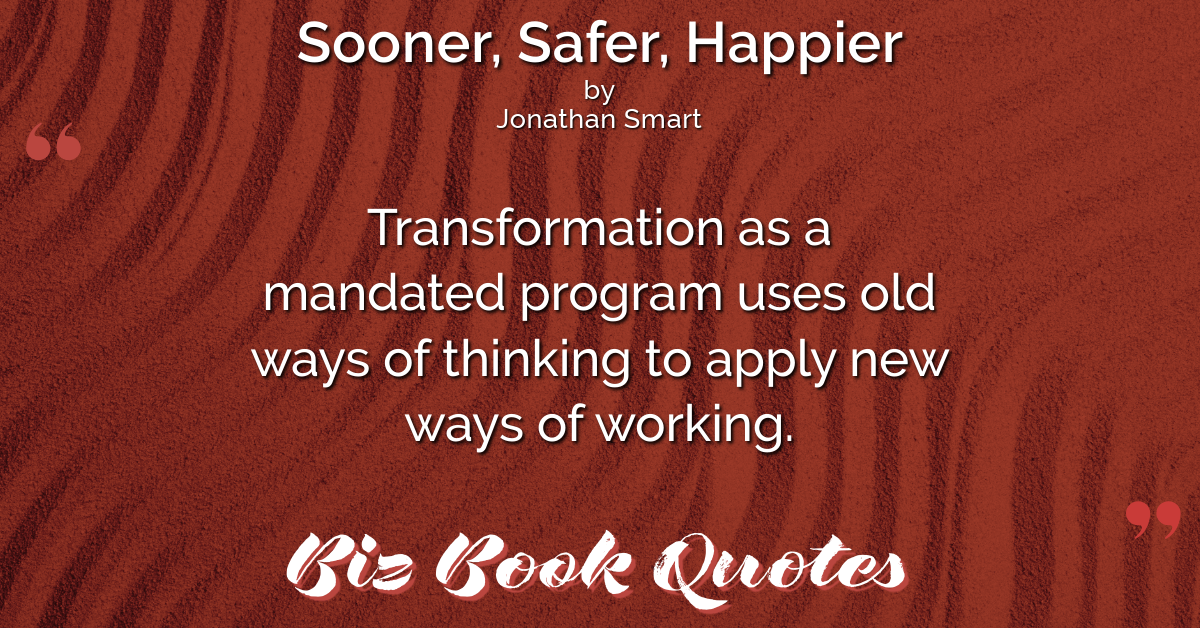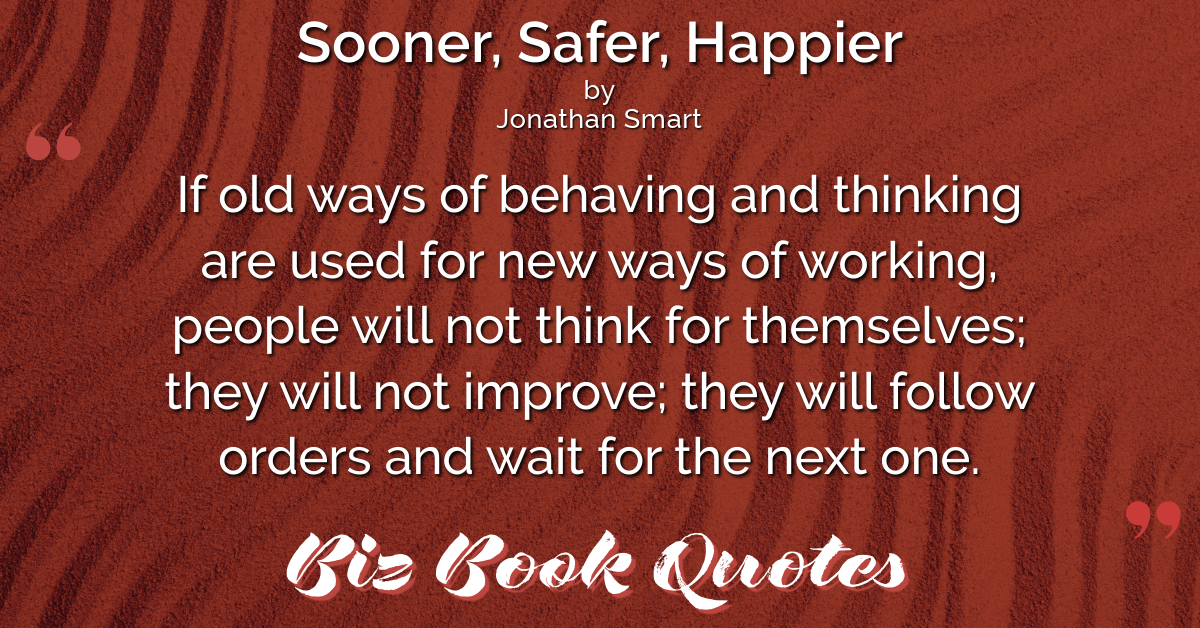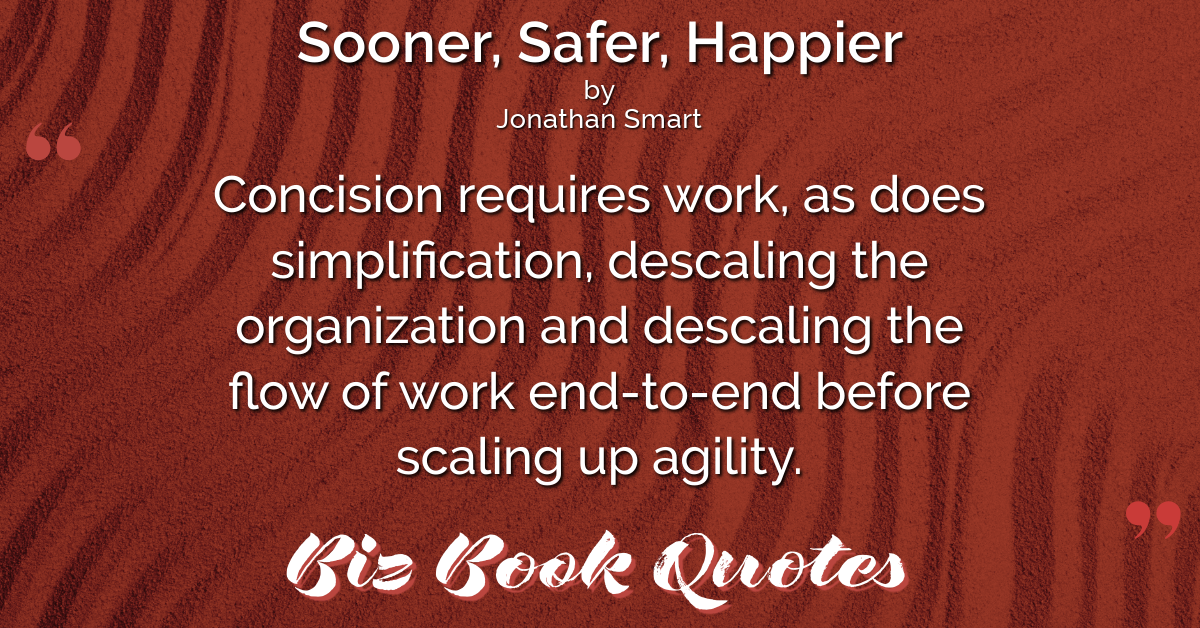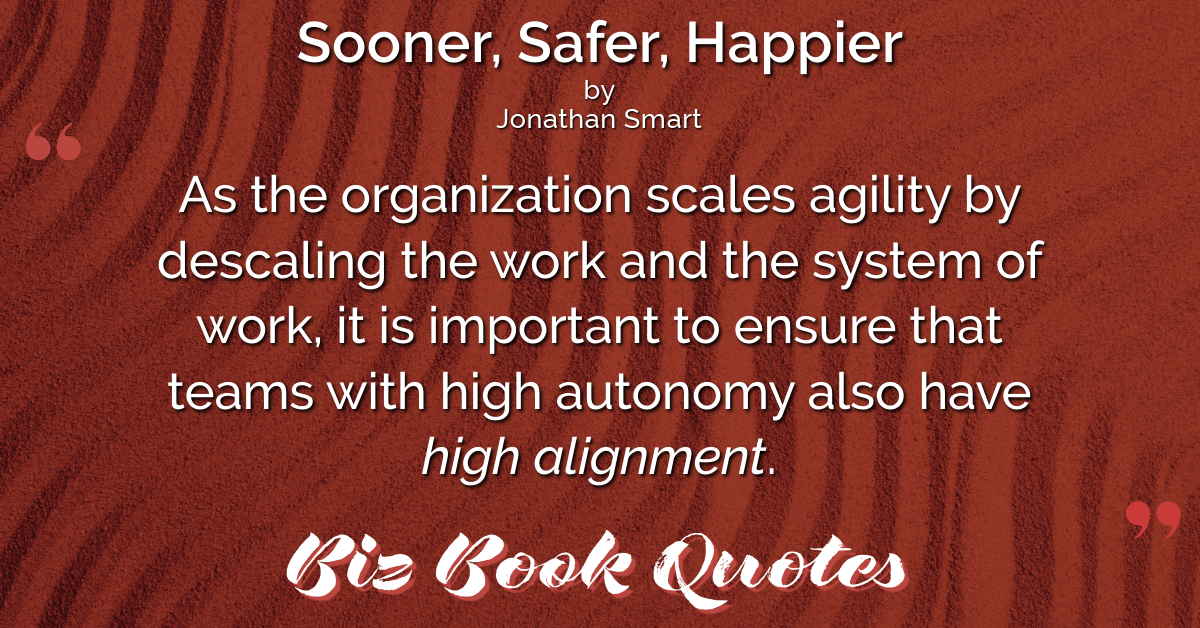 |
Transformation as a mandated program uses old ways of thinking to apply new ways of working.
|
048 |
 |
If old ways of behaving and thinking are used for new ways of working, people will not think for themselves; they will not improve; they will follow orders and wait for the next one.
|
050 |
 |
The organization needs to understand the reasons for being asked to improve ways of working, and those reasons need to appeal to people’s intrinsic motivators.
|
052 |
 |
Concision requires work, as does simplification, descaling the organization and descaling the flow of work end-to-end before scaling up agility.
|
077 |
 |
In order to increase agility, in order to optimize for the fast flow of safe value, work and the system of work needs to be descaled.
|
086 |
 |
An organization is a network of interdependent services. Therefore the descaling efforts should include working to break dependencies, not only to manage them.
|
086 |
 |
As the organization scales agility by descaling the work and the system of work, it is important to ensure that teams with high autonomy also have high alignment.
|
087 |
 |
Within guardrails, practices should not be imposed on teams. Teams should be invited and supported to take ownership in order to work out the best way to apply the principles and improve outcomes for themselves.
|
106 |
 |
Autonomy, empowerment, and psychological safety increase intrinsic motivation and engagement as people bring their brains to work.
|
107 |
 |
The biggest lever for better ways of working, leading to better outcomes, is behavior. Change is a social activity.
|
131 |